1. Always Pack a Fold-Flat Extra Bag

When flight attendants finally hang up their wings for a personal trip, they’re not just regular passengers, they’re travel ninjas. Seasoned crew members know that souvenirs, impulse purchases, or even just duty-free additions can quickly multiply, leading to overstuffed luggage. They always include a lightweight, fold-flat tote or backpack in their main luggage. This serves as a dedicated bag for shopping, dirty laundry, or as a flexible carry-on for the return trip, ensuring their main roller bag never has to strain its zippers and remains organized.
2. Use Solid Toiletries to Avoid Spills and Limits

To bypass the hassle of TSA’s liquid rules and the horror of a mid-trip shampoo explosion, many flight attendants switch to solid toiletries. This includes shampoo bars, conditioner bars, solid face balms, and bar soap. These products not only last longer than their liquid counterparts but also eliminate the need for clear plastic bags and ensure a smoother, faster experience when passing through airport security checkpoints.
3. Carry Electrolyte Powder Packets

The dry, pressurized air of an airplane cabin, coupled with busy travel days, can lead to quick dehydration and fatigue, often making jet lag feel worse. Off-duty flight crew members frequently pack small, single-serving packets of electrolyte mix to add to their glass or water bottle. This helps them stay properly hydrated, replenish essential minerals, and maintain alertness, proving far more effective than water alone for combating the physical toll of travel.
4. Bring Your Own Large, Multipurpose Scarf

A generously sized scarf is one of the most versatile items in a flight attendant’s personal bag. On the plane, it functions as a lightweight, clean personal blanket, a makeshift pillow, or a cover-up to block light. Once at the destination, it can serve as a stylish wrap, a sun cover, a modest covering for religious sites, or even an emergency beach towel, saving valuable packing space.
5. Wipe Down Your Personal Area

Having witnessed the quick and often superficial nature of plane cleanings, flight attendants never trust that their immediate area is truly sterile. Before settling in, they use their own disinfecting wipes to quickly clean the tray table, seatbelt buckle, armrests, and even the entertainment screen. This small ritual significantly minimizes their exposure to germs and is a proactive step toward staying healthy while flying.
6. Book the Morning Flights

To minimize the chance of delays, flight attendants often opt for the earliest morning flights, usually before 8:00 a.m. System delays caused by weather or air traffic congestion tend to accumulate throughout the day, causing a domino effect on later departures. By traveling first thing in the morning, they effectively reset the clock and increase the likelihood of a punctual takeoff and arrival.
7. Never Drink the Airplane Tea or Coffee
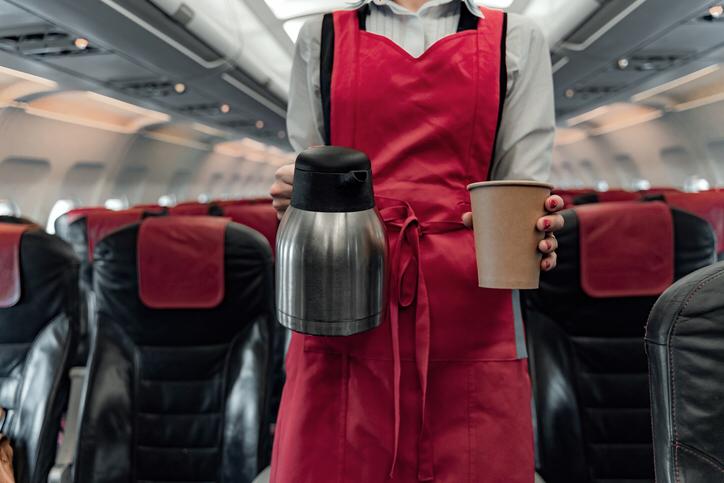
Crew members are consistently advised to steer clear of hot beverages made with the plane’s tap water. Water tanks on aircraft are known to be infrequently cleaned and have, in some studies, tested positive for certain bacteria. When traveling off-duty, they will politely ask for bottled water instead or bring their own herbal tea bags and request only hot, filtered water, or use a bottle to ensure a cleaner drink.
8. Pack a Small, Curated First-Aid/Wellness Kit
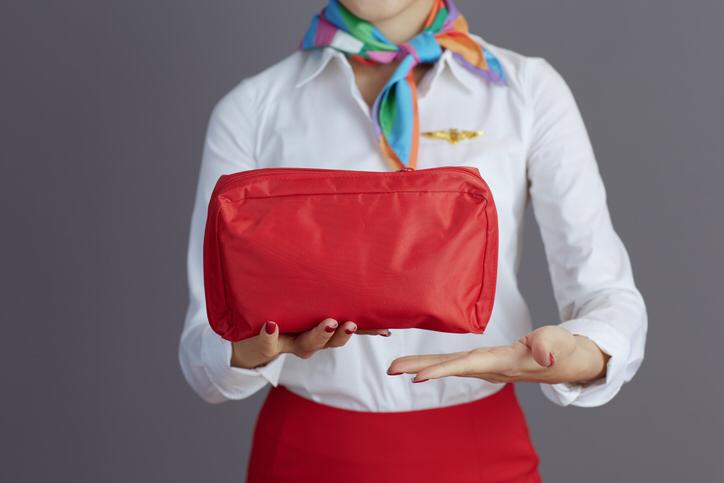
Instead of relying on an airplane’s limited supplies or frantically searching for a pharmacy in a foreign country for minor ailments, flight attendants maintain a tiny, well-stocked personal first-aid kit. This typically includes blister bandages, pain relievers, cold and flu medication, and essential medication. This foresight allows them to quickly address headaches, cuts, or slight digestive issues, preventing minor problems from escalating.
9. Keep a Separate “Landing Kit” in the Seat Pocket
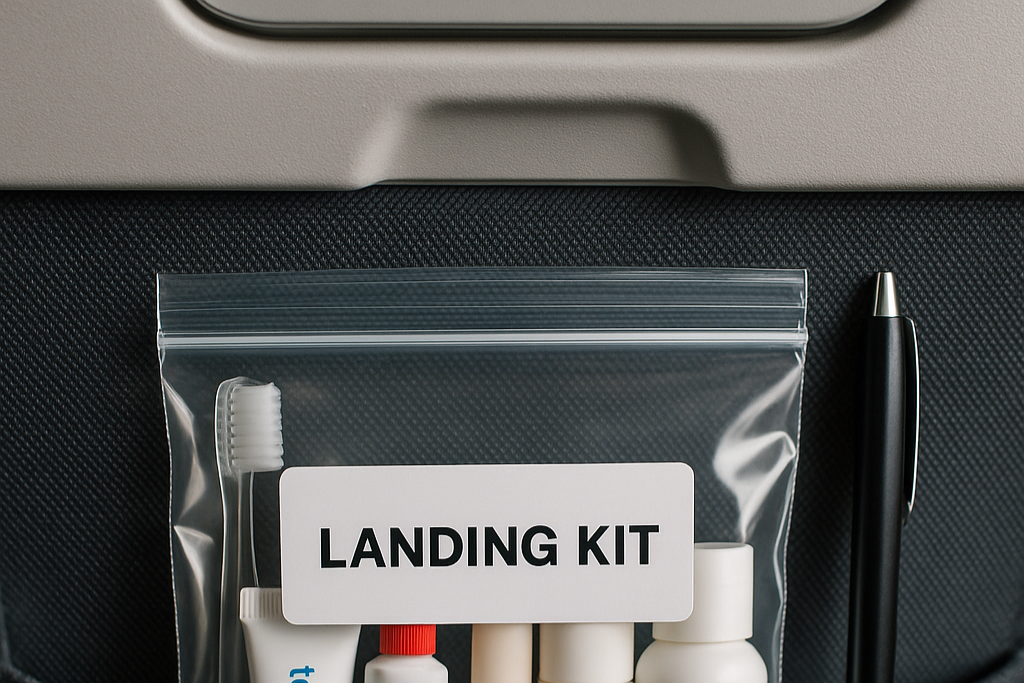
Flight attendants have perfected the art of a rapid, fresh arrival. They organize a small ‘landing kit’ and place it in the seatback pocket right before descent. This kit contains essentials like a toothbrush and mini-toothpaste, lip balm, a small moisturizer, and a pen for customs forms, allowing them to freshen up right before the doors open without rummaging through their main carry-on.
10. Choose Soft-Sided Carry-On Luggage
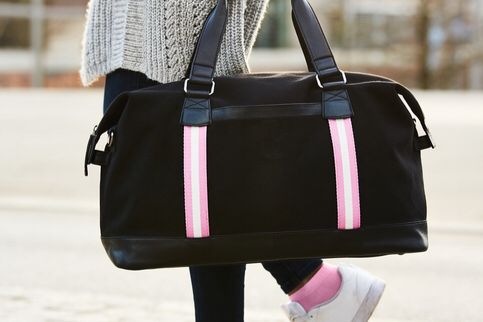
When traveling with a carry-on, many crew members prefer soft-sided bags over hard-shell cases. The flexibility of a soft-sided bag makes it easier to compress slightly to fit into overhead compartments on various aircraft types, or squeeze into tighter spaces if the bin is almost full. This pragmatic choice minimizes the stress of fitting baggage and helps them board and deplane more efficiently.
11. Wear Compression Socks on Long Flights
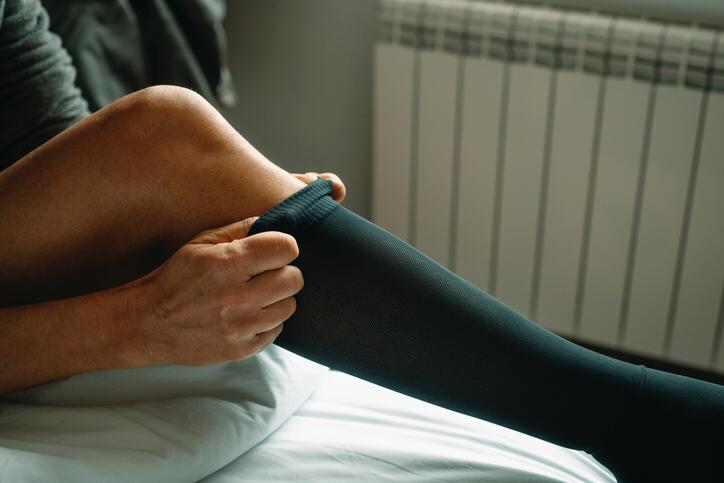
Sitting for extended periods, even when off-duty, significantly increases the risk of circulation issues and deep vein thrombosis (DVT). To prevent swollen ankles and legs, flight attendants consistently wear comfortable compression socks during any flight over a few hours. These socks apply gentle pressure, helping to stimulate blood flow and keeping them feeling fresh and energized upon arrival.
12. Always Bring Their Own Comfort Items

Plane blankets and pillows, while sometimes provided, are not always guaranteed to be clean or fresh. For guaranteed comfort, flight crew always bring their own essentials: a lightweight, packable blanket or the aforementioned large scarf, an eye mask to block light, and noise-canceling headphones. These simple items create a clean, personal sanctuary, helping them rest better regardless of the cabin environment.
13. Avoid Boarding Immediately
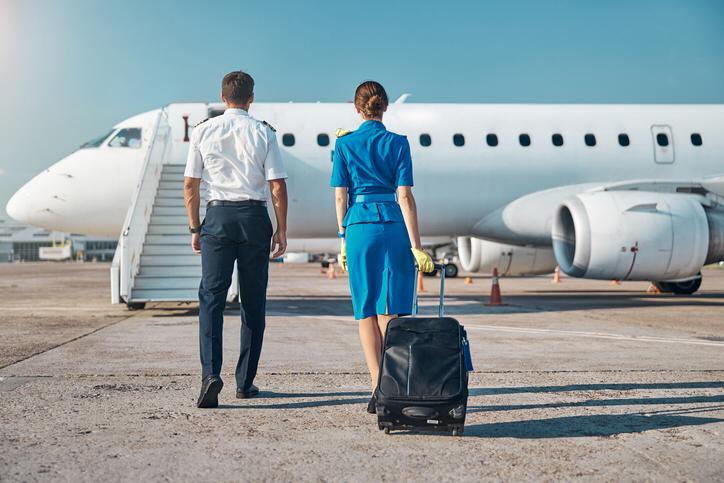
Contrary to the general rush, flight attendants who are not working prefer to board toward the end of their zone. Standing in a cramped jet bridge accomplishes nothing, and their priority is to get a guaranteed spot for their carry-on in the overhead bin near their seat. By waiting until the line is shorter, they avoid unnecessary congestion and minimize time spent sitting stationary on the aircraft.
14. Pre-Download Everything and Charge Power Banks
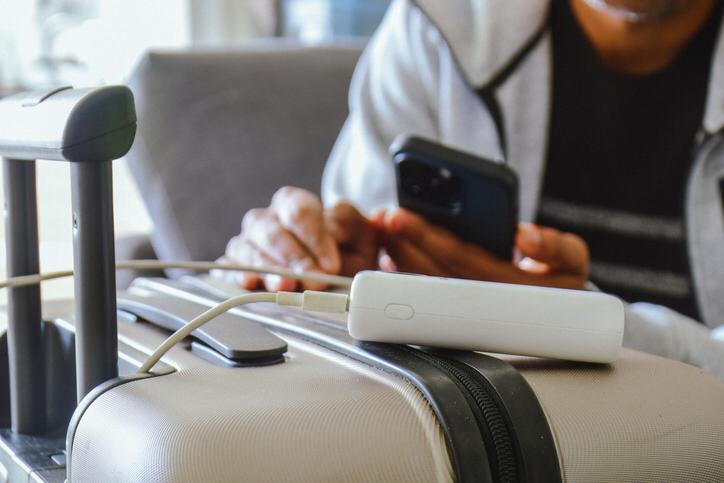
A seasoned traveler never relies on unreliable in-flight Wi-Fi or fully functional in-seat power ports. Before leaving home, crew members meticulously download movies, podcasts, and books to their devices. They also ensure their portable power banks are fully charged, guaranteeing they have entertainment and a functional phone upon landing, even if their plane’s amenities fail.
15. Start Jet Lag Adjustment Early
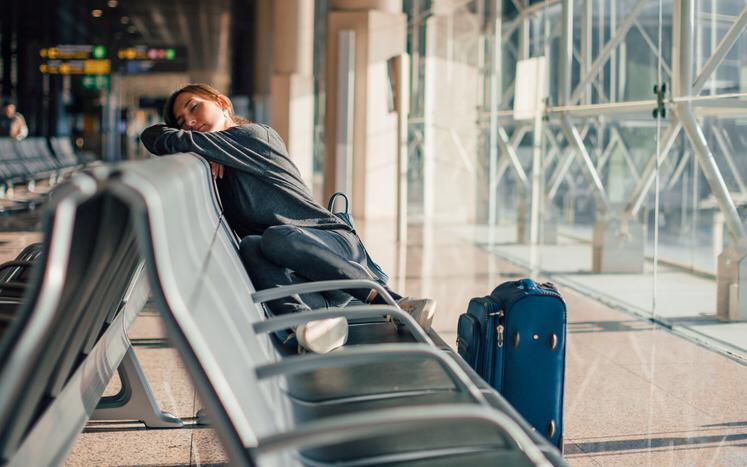
Combatting jet lag begins before the plane even takes off. If traveling east, flight attendants start adjusting their sleep schedule slightly earlier a few days before the flight; if traveling west, they stay up a little later. This gradual shift makes the time difference less shocking to the body upon arrival, allowing them to adjust to the local time zone faster than those who wait until landing.
So there you have it, the professional edge straight from the crew members who make a living perfecting the art of travel. These hacks aren’t complicated; they’re just smart, practical, and grounded in a wealth of real-world experience. Implement a few of these, and your next trip might just feel less like a journey and more like a perfectly planned mission.
Like this story? Add your thoughts in the comments, thank you.
This story 15 Travel Hacks Flight Attendants Actually Use Off Duty was first published on Daily FETCH


